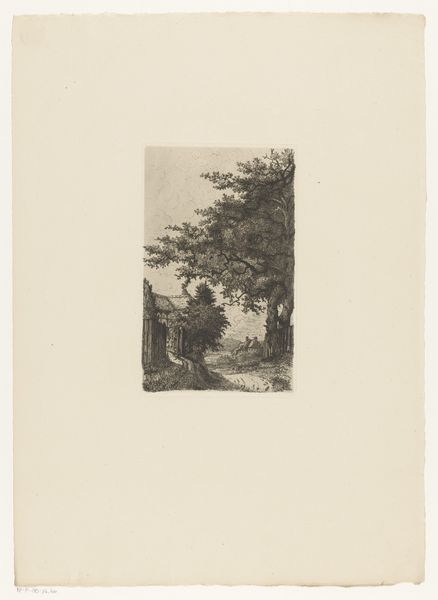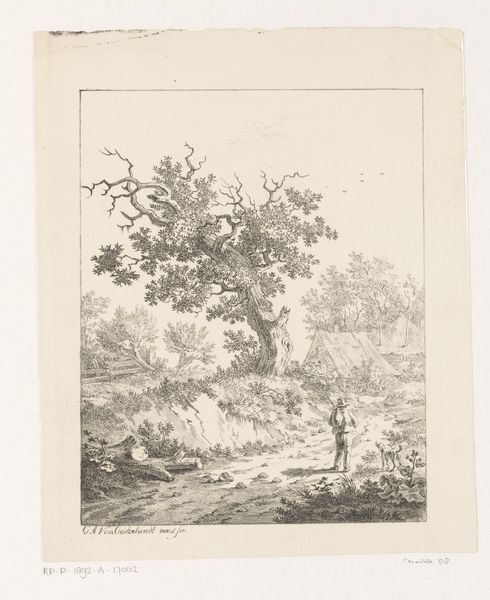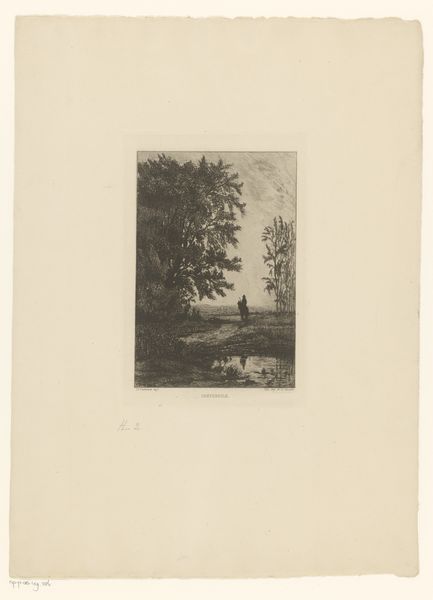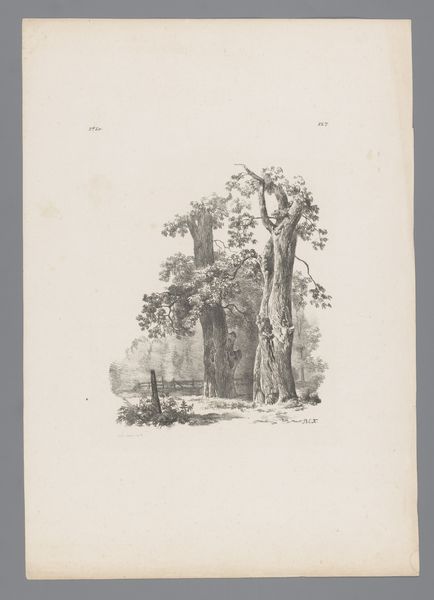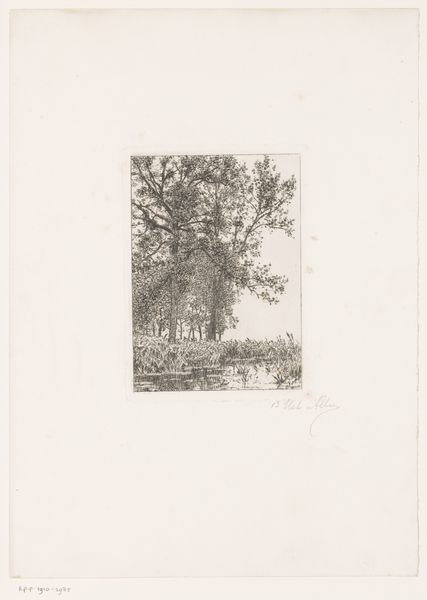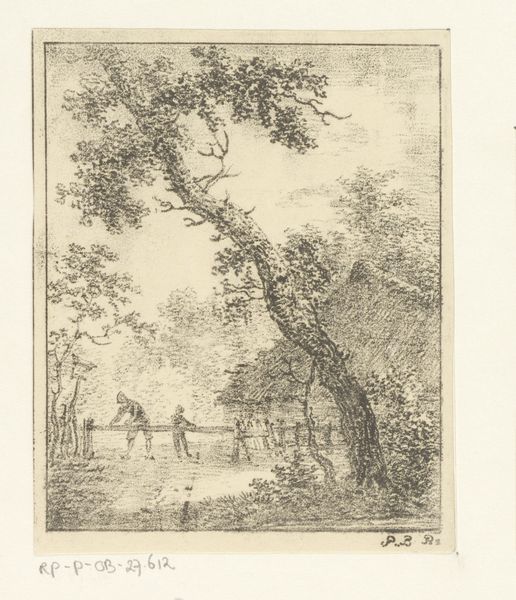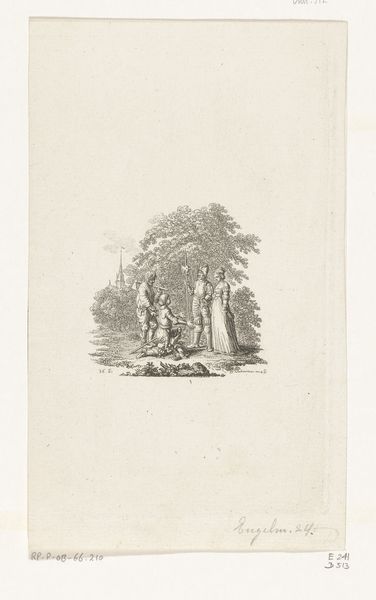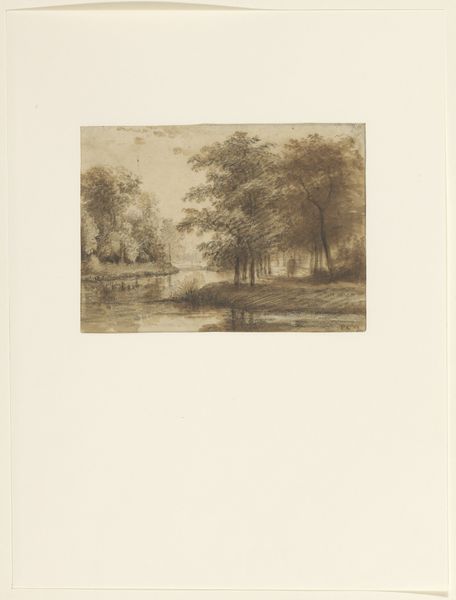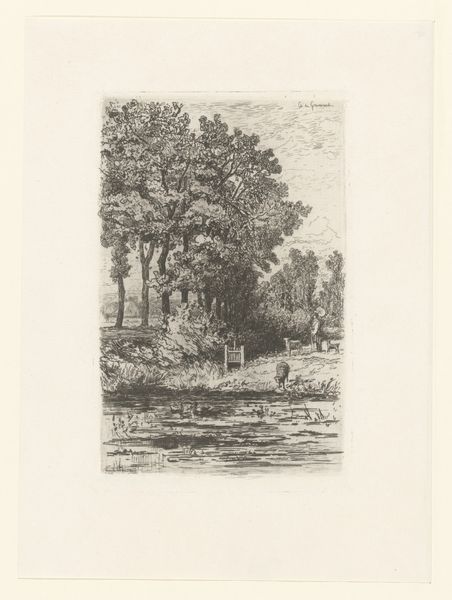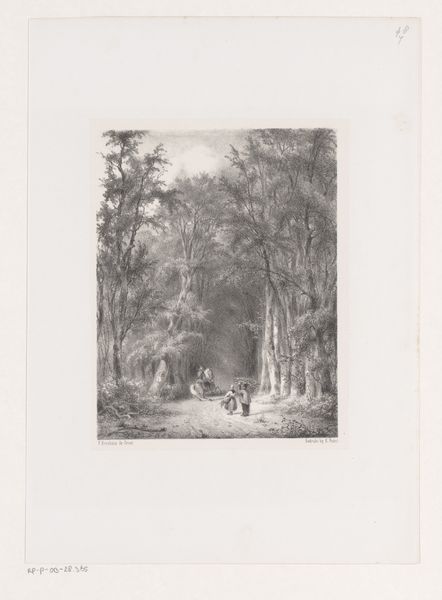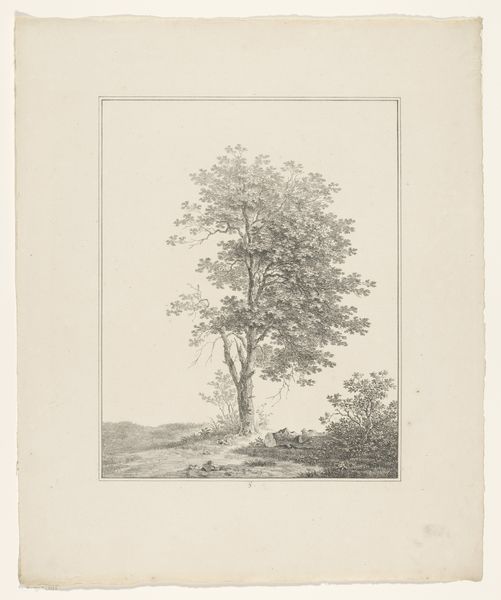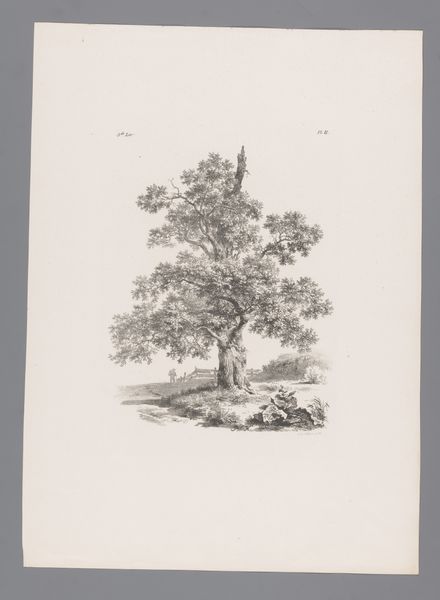
drawing, graphite
#
drawing
#
pencil sketch
#
landscape
#
romanticism
#
graphite
#
pencil work
Dimensions: height 430 mm, width 300 mm
Copyright: Rijks Museum: Open Domain
Editor: Here we have Barend Cornelis Koekkoek’s "Man en ezel op landweg," a drawing from around 1844 or 45, rendered in graphite. The detail is quite striking for a pencil work. What can you tell me about it? Curator: The texture achieved here, specifically in the trees, is significant. Consider the graphite itself: the quality, the grade. Koekkoek wasn’t simply depicting nature, but mastering a particular material process. The economic realities of accessing and affording high-quality graphite play a role, and the implied labor that this skill requires must be considered. How does that material quality intersect with the work’s broader theme of landscape and labor? Editor: That's interesting. So you’re saying the skill and the material become part of the message itself, and maybe speaks to a certain class perspective of the artist and potential patron? Curator: Precisely. He transforms the landscape into a commodity through the very act of meticulously rendering it. Look at the almost photographic detail in the trees compared to the somewhat sketched figures – what does that choice signify in terms of valuing aspects of nature versus humanity? Think about land ownership at this time and the representation of both natural resources and figures. Editor: It sounds like this idyllic scene might actually be more complex, raising questions about labor, class, and ownership, reflected in the meticulous way it was crafted using a specific, high-quality material. Curator: Exactly. We move past just seeing pretty scenery to really analyzing the economic and social systems interwoven into its very production. Editor: That gives me a completely different appreciation for what went into this deceptively simple landscape drawing! Thanks!
Comments
No comments
Be the first to comment and join the conversation on the ultimate creative platform.

